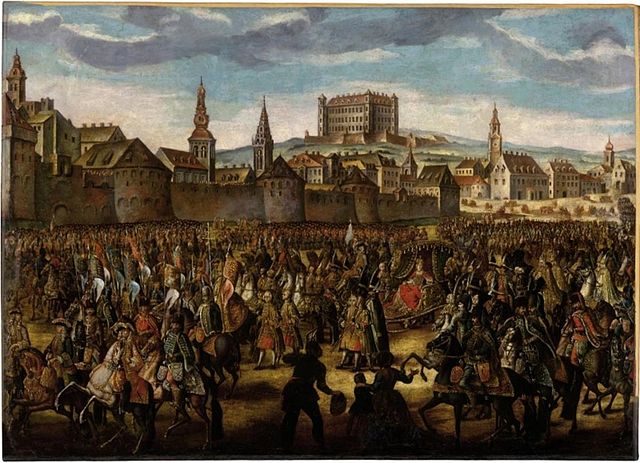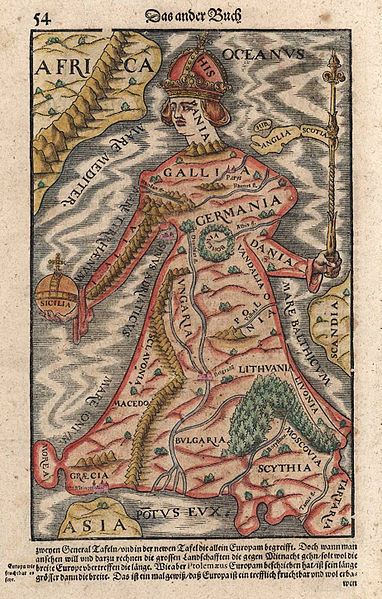Imperial Free City of Trieste
The Imperial Free City of Trieste and its Territory was a possession of the Habsburg monarchy in the Holy Roman Empire from the 14th century to 1806, a constituent part of the German Confederation and the Austrian Littoral from 1849 to 1920, and part of the Italian Julian March until 1922. In 1719 it was declared a free port by Emperor Charles VI; the construction of the Austrian Southern Railway (1841–57) turned it into a bustling seaport, through which much of the exports and imports of the Austrian Lands were channelled. The city administration and economy were dominated by the city's Italian population element; Italian was the language of administration and jurisdiction. In the later 19th and early 20th century, the city attracted the immigration of workers from the city's hinterlands, many of whom were speakers of Slovene.
Image: Litorale austriaco 1897
The Habsburg monarchy, also known as Habsburg Empire, or Habsburg Realm, was the collection of empires, kingdoms, duchies, counties and other polities that were ruled by the House of Habsburg. From the 18th century it is also referred to as the Danubian monarchy or the Austrian monarchy.
Silver medallion depicting King Rudolf I with his sons Albert and Rudolf II at the Diet of Augsburg, which laid the foundation of the House of Habsburg. Work by Anton Scharff for the 600th anniversary of the constitution of the Erblande, 1882.
Growth of the Habsburg monarchy in central Europe
Coronation of Maria Theresa in Pressburg, Kingdom of Hungary, 1741
Europa regina, symbolizing a Habsburg-dominated Europe





